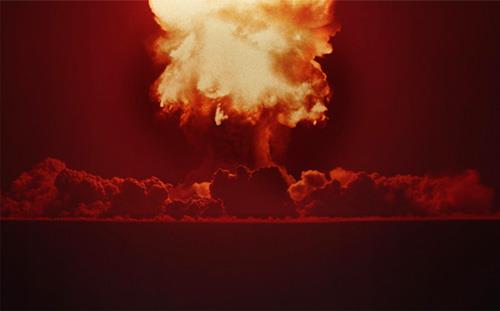
Seventy-five years ago next Thursday, on Aug. 6, 1945, the United States B-29 Enola Gay dropped the atomic bomb that destroyed the Japanese city of Hiroshima, effectively ended World War II, and started a moral debate about the potential life and death of the human race.
Could anything – anything – justify employing a weapon that could vaporize a city in seconds and kill 200,000 of its inhabitants, almost all civilians?
To mark the anniversary, at least two television documentaries look at the bombing and its legacy from quite different perspectives.
History channel’s Hiroshima: 75 Years Later, which premieres Sunday at 10 p.m. ET, documents America’s Manhattan Project, the top-secret and frantically urgent operation that developed the bomb.
The Vow of Hiroshima, which will air starting next Thursday on the streaming service Ovid.tv, documents the life of Setsuko Thurlow, who was a 13-year-old schoolgirl in Hiroshima on Aug. 6, 1945.
She’s not sure how she survived, but she’s pretty sure she knows why: to urge the world for the rest of her life never, never, never to allow such a weapon to be used again.
So far, Setsuko has been successful, an effort underscored when she was part of the group that won the 2017 Nobel Peace Prize. The bomb that destroyed Hiroshima, and its sibling that three days later destroyed Nagasaki, remain the only two deployments of atomic devices as weapons.
But as long as countries have nuclear warheads available, and as long as countries are run by human beings with human volatility, no one should get overconfident.
At the very least, nuclear weapons remain primary chips in global diplomacy. America’s fierce internal debate over how to respond to reports of Iran working on nuclear weaponry reinforces the unnerving knowledge that the question isn’t just theoretical.
The Vow of Hiroshima, which was co-written by Susan Strickland and Mitchie Takeuchi, herself the daughter of an Hiroshima survivor, makes no secret of its position: Atomic weapons deliver a level of savage inhumanity that no rational person of any ideology should tolerate.
Hiroshima: 75 Years Later lays out both sides in the nuclear debate. It portrays the Manhattan Project’s development of Little Boy and Fat Man, the code names for the two bombs dropped on Japan, as a remarkable triumph at the same time it acknowledges that debate had already begun within the Project on the morality of the whole enterprise.
Chief scientist J. Robert Oppenheimer quelled the debate, in part, by arguing that it was theoretical until a bomb was actually built and deployed.
The two overriding arguments at the time, however, were seen as considerably less abstract.
First, the United States had known since the early days of the war that Nazi Germany was also working on an atomic bomb, with a phalanx of top physicists and scientists. No one anywhere thought German Chancellor Adolf Hitler would have any moral qualms about dropping such a weapon on England, Russia, or the United States.
Second, the Japanese showed no signs of surrendering after Germany gave up in April 1945. The United States military warned that only a land invasion of Japan itself would win the Pacific War and estimated the invaders could suffer a million casualties – on top of what the Japanese themselves would suffer.
By that calculus, dropping the atomic bombs on Hiroshima and Nagasaki was, in sheer numbers, a big win. While it cost hundreds of thousands of lives, it saved millions.
Hiroshima: 75 Years Later doesn’t overtly endorse that view, but it does portray the Manhattan Project as an ultimately triumphant drama, complete with a tough arrogant boss in Brigadier Gen. Leslie Groves, a driven project manager in Oppenheimer, and a crew of alpha scientists who often had their own opinions, but fell in with the team.
The whole project cost billions of dollars and created a couple of de facto cities, while miraculously maintaining such a level of security that when Vice President Harry Truman became president upon the death of Franklin Roosevelt in April 1945, Truman knew nothing about the Manhattan Project.
On the other side, conversely, Setsuko Thurlow saw the end result of the Manhattan Project turning a beautiful summer day into a new circle of Hell.
She was in school when Little Boy exploded 1,870 feet above the city. She was able to scramble from the rubble just before some 30 of her less fortunate classmates burned to death in the fire that consumed the building.
Members of her family were gone. Classmates were vaporized, turned to carbon. She remembers people in the streets with skin peeling off their bones. She remembers dying people begging for water and having none.
Mankind has to be better than that, Setsuko has been saying for the last 75 years, or it will eradicate itself in the most gruesome way possible.
Hiroshima: 75 Years Later and The Vow of Hiroshima aren’t exactly dueling documentaries. They use many of the same images, to the same effect, and together they underscore why the nuclear debate feels no less urgent today than on the beautiful summer morning when it first exploded.